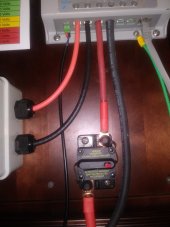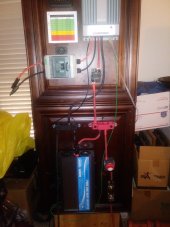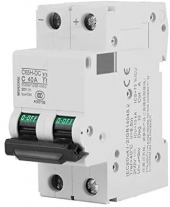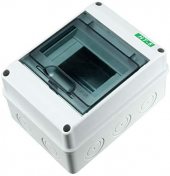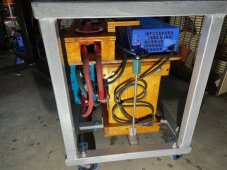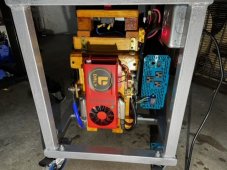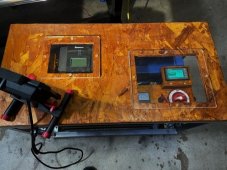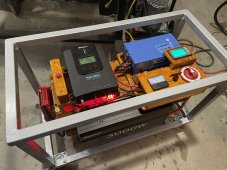I like it. That's a lot of work you did.....I know!
I just finished a ''solar generator'' cart for my son's house. He was out of power for 47 hours last year in August during the wildfires and heat wave. Running the Honda eu2000 generator every 8 hours was a chore. So now he can rig for silent running. Its on wheels and fits under his workbench. It has 8 of the Lishen 280AH cells in 12 volt configuration, 3000 watt inverter, 250 amp Daly BMS, Renogy Rover 30 amp MPPT solar input, an on board Aims 75 amp charger that can be plugged into his generator if needed. Its total is 7200 watt hours, 560 amp hours so it should run his fridge and freezer for a few days. There's an onboard Renogy 500 amp shunt battery monitor visible through the plexiglass top, 350 amp Blue Sea disconnect switch, and 100 amp isolation switches for the MPPT unit and the Aims battery charger.
I hardwired an outlet box with 15 amp outlets for the extension cord he will use. Its heavy duty and somebody would probably snag that cord if it were plugged in the inverter outlets. I try to make everything stupid proof. My guess on weight is 125 pounds. Tonight I added a panel with USB outlets, voltmeter, and 2 12 volt cigarette lighter outlets powered off the MPPT 12 volt load unit with a 20 amp circuit breaker in there for fun. A 50 amp Andersen plug allows him to plug in a roll of 10 gage wire. The solar panels will be temporarily set on his South facing patio roof. No permanent solar panel system will be installed just yet. In testing and beating on this cart, I have solar panels set up with the roll of temporary wire and MC-4 connectors. I have been running a 10,000 BTU window AC unit with it for free this week in this heat wave. I put 2700 watts load on with room heaters to check for any hot battery posts. Looks good so far. Everything is bolted down and secured with clamps and allthread. This unit could survive on its side or upside down with no damage. The MPPT is supposed to be wall mounted for ventilation but I put a 5 inch computer case fan under it. I can't feel any warmth on the cooling fins. It might not need it.




